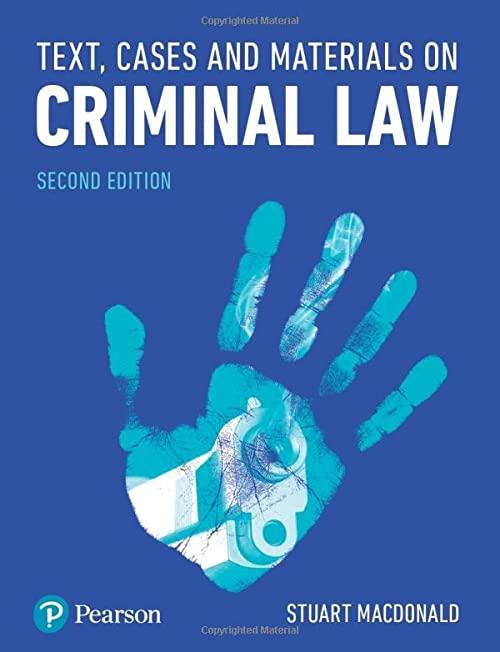Question
The United Nations Declaration on the Rights of Indigenous Peoples ('the Declaration') was adopted by the United Nations General Assembly on 13 September 2007, by
The United Nations Declaration on the Rights of Indigenous Peoples ('the Declaration') was adopted by the United Nations General Assembly on 13 September 2007, by a majority of 143 states in favour, 4 votes against (Australia, Canada, New Zealand and the United States) and 11 abstentions. The four states that voted against subsequently declared their support for the Declaration (including Australia in 2007, following the election of the Rudd Government). The Declaration mentions Treaties between Indigenous Peoples and States in its Preamble and in Article 37. The latter provides: 1. Indigenous peoples have the right to the recognition, observance and enforcement of treaties, agreements and other constructive arrangements concluded with States or their successors and to have States honour and respect such treaties, agreements and other constructive arrangements. 2. Nothing in this Declaration may be interpreted as diminishing or eliminating the rights of indigenous peoples contained in treaties, agreements and other constructive arrangements. You are a legal advisor in the independent Treaty Authority established in Victoria to oversee negotiations between the Victorian Government and the First Peoples' Assembly of Victoria to ensure a fair process in the conclusion of a Treaty that delivers self-determination for Victoria's First Peoples. Victoria was the first State to commit to all three elements of the Uluru Statement from the Heart (Voice, Treaty and Truth). The relevance of the Declaration to the Treaty-making process has been considered in detail by Dr Harry Hobbs. You have been asked to provide legal advice addressing the following questions: (1) What is the status of the Declaration under international law? (2) What is the status of the Declaration under Australian law? (3) In Love v Commonwealth [2020] HCA 3, Bell J (at [73]) cited the Declaration when making the following observation: 'It is not offensive, in the context of contemporary international understanding, to recognise the cultural and spiritual dimensions of the distinctive connection between indigenous peoples and their traditional lands, and in light of that recognition to hold that the exercise of the sovereign power of this nation does not extend to the exclusion of the indigenous inhabitants from the Australian community.' What legal effect was Bell J ascribing to the Declaration under Australian law? (4) In what respects does the Advancing the Treaty Process with Aboriginal Victorians Act 2018 (Vic) implement the Declaration in Victorian law? (5) What status will a Treaty or Treaties between Indigenous Victorians and the State of Victoria have as a matter of Victorian, Australian and international law?
Step by Step Solution
There are 3 Steps involved in it
Step: 1

Get Instant Access to Expert-Tailored Solutions
See step-by-step solutions with expert insights and AI powered tools for academic success
Step: 2

Step: 3

Ace Your Homework with AI
Get the answers you need in no time with our AI-driven, step-by-step assistance
Get Started


